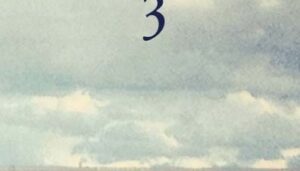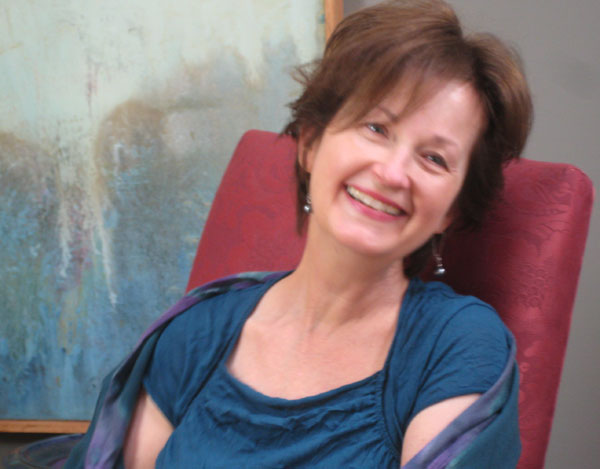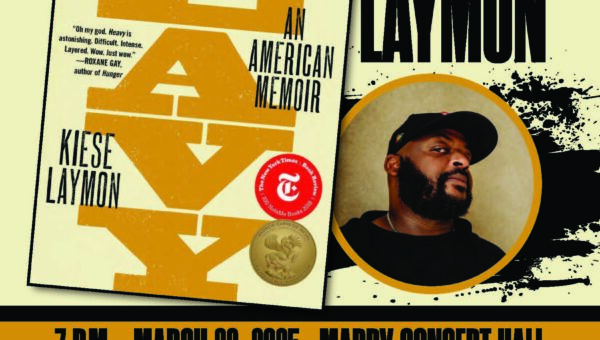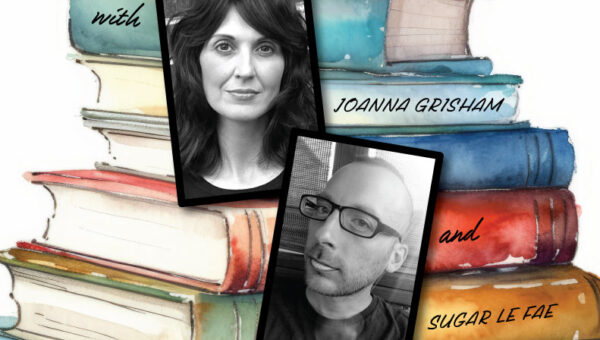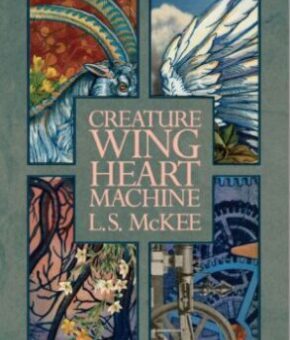Amy Wright for Zone 3: Your recently released nonfiction, The Tribal Knot, is a multi-generational family memoir. I love this concept, but I am not familiar with this mode of writing. Did you feel yourself to be working within a tradition, or were you inspired by particular models?
Rebecca McClanahan: The term “multi-generational memoir” was offered by an early reader of the manuscript, and I was grateful for the insight. There are many ways to weave the author’s story into an ancestral history, many excellent models. While working on my book, I read dozens of books and am still reading them (I just finished Sonya Huber’s fascinating Opa Nobody a few days ago) and could not possibly name all the books that inspired me. Here’s a few, off the top of my head: Ian Frazier’s Family, Mary Clearman Blew’s All But the Waltz, Suzannah Lessard’s The Architect of Desire, Mimi Schwartz’s Good Neighbors, Bad Times, Lee Martin’s Turning Bones, Robert Root’s Recovering Ruth. Fiction writers, too, teach us how to write ancestral histories: Alice Munro’s The View From Castle Rock, Edward Jones’s The Known World. Oh, so many fine books out there.
AW: What gave you the courage to undertake such a daunting project as to weave stories of the Mounts family spanning distance and decades, and how did you determine a form for the narrative?
RM: Courage? Is it courage when you have no idea of what’s ahead of you? Because I had no idea where the trail would lead. I’ve never had an idea where any writing adventure might lead; if I did, I probably would hang back like the Cowardly Lion. I just plunged in because I was so fascinated by the letters and documents and artifacts, and later by the oral histories and interviews, that I could not have stopped even had I wanted to. I was hooked. As for the form, it developed over a long period of trial and error. But once I discovered the ancestral hair weaving detail–through one of my interviews–that image helped me see that the narrative would be shaped at least partly by interwoven histories. I also opted for fairly straightforward chronology, to help the reader move through time with me.
AW: I can imagine why you might want to gather and preserve your ancestral stories, having inherited hundreds of letters, postcards, documents, and artifacts, but how did you decide which threads to pull into the narrative braid and which to drop?
RM: I listened for echoes. Well, maybe I didn’t have to listen too hard; the letters and documents sang out pretty clearly. Certain themes, subjects, and relationships kept repeating, and those that not only repeated but also had personal significance to me, those were the threads I decided to weave into the braid. Strange, isn’t it, how we are using hair images here. No, hair is not a subject in the book, but the structure of braiding and weaving definitely is.
AW: I appreciate the Author’s Note on your website, which says you write from a “deep need to explore the mysteries and complexities of so-called ordinary lives.” Especially given that you write not only poetry but also nonfiction, a genre that often promotes extraordinary stories—why do you trust riches that might seem plain?
RM: I believe that writers must trust what is given to them. “Riches that might seem plain”? I like that idea. You’re right that the nonfiction genre often (almost always?) promotes extraordinary stories, which I take to mean extraordinary subject matter. Is that what you mean? That is, subjects that draw people in, that will sell in the marketplace no matter how they are shaped by the writer’s hand? To me, it is the quality of attention paid to the subject that ensures its riches, not the subject itself. Scratch any life deeply enough, however seemingly ordinary or plain that life seems, and a rich design emerges. Fiction writers create “ordinary” characters all the time, and we willingly enter their narratives. Why should real-life, nonfiction characters be held to a different standard? It is the writer who makes us care, not the subject itself. Well that’s my story and I’m sticking with it.
AW: I agree the quality of attention makes the difference. I was thinking of writers I’ve had the opportunity to meet or teach who interpret the old adage to “write what you know” as a call to pursue a more “extra-ordinary” life when all the while they are raising goats or orchids. As your statement and writing demonstrates, the treasures are inherent in the examination.
As anyone who has ever tried to write about family members knows, sometimes the people we know the best are hardest to capture. Your portraits are intimate yet respectful of privacy. Will you talk about the challenges and perhaps rewards of crafting characters who are not fictional?
RM: You are absolutely right about the difficulty of writing about real life people, especially those close to us. But “capture”? I gave that up years ago, the capturing I mean. Real life people are made out of blood and skin and sweat and hair and scents and voices. Writing is made out of words. What a relief: I’m off the hook! I will never capture the fullness of anyone’s life; I can only make black marks on a page and try to make the best marks possible to bring the reader into what John Gardner calls the “fictional dream.” Though mine of course is a nonfictional dream. Or so I hope. I think that one of the reasons nonfiction characters are hard to construct on the page is because they already feel so real to the writer, because they exist in real life. So maybe we assume they will feel real to the reader with only a few brush strokes, or even a name–my mother, my aunt, etc. But we nonfiction writers have to build our characters from scratch on the page, just like fiction writers. We must use all the tools a fiction writer uses, except of course making up characteristics or facts.
AW: The Tribal Knot transitions between personal memoir and family history. Will you describe how the multi-generational lens informs your character’s story?
RM: In The Tribal Knot, the memoir part–my own story–is most present at the beginning of the book and then in the last few chapters, though bits of personal memoir surface every now and then in the ancestral history that spans about 120 years. In the first several years of writing the book, I tried to keep my own story out, period. I’d written many memoir essays–I still do–and had published The Riddle Song and Other Rememberings (a kind of starter dough for The Tribal Knot, I now see) and I’d envisioned The Tribal Knot as very different, more of a group biography of my ancestors. I would be their biographer, braiding their stories together. That’s what I envisioned. Life, as usual, had other plans. I got ambushed by their stories. The relatives and ancestors, living and dead, found me out, cornered me. “Come on out, you coward,” they seemed to say. “You’re part of this family too!” Turns out, I needed their stories to understand my own life. Their lives had formed me, for better or worse, and I needed to claim these lives as my own, as I hope my ancestors would want to claim mine.
AW: Trying to determine how and why I care so quickly about Bessie and Sant’s “first great sorrow” in your excerpt from Chapter 7, I note your lyric descriptions such as the paraffin-sealed jars of jellies lining the window sill “Like jewels!” You have written generously in Word Painting: A Guide to Writing More Descriptively about engaging “the eye of the imagination” by “research, eye-search and I search.” Were some of these elements part of your process for The Tribal Knot?
RM: Yes, these elements all played their parts throughout the entire book, though I’m not sure I can trace where one left off and the others began. But if we isolate that excerpt from Chapter 7, about 4 pages, I can probably reconstruct some of my process, how what I knew informed what I wrote. Research and eye-search: I had Bessie’s diary, a sympathy card, lots of letters and postcards, photographs, census records, some of Bessie’s books, interviews, site visits (I visited the home where Bessie and Sant lived during the time and also the cemetery where I tried to find their baby’s grave), research about trackers and about grief psychology, interviews with her nieces (that’s where I got the information about the paraffin-sealed jars, white curtains.). As for my own I-search, I knew Bessie well; she lived with our family during much of my childhood and adolescence. When visiting her homeplace in Indiana, I even slept with her on a feather bed like the one I described, and she explained how they made the mattresses. As for emotional connections, I too had a “Might Have Been,” the phrase I choose over “miscarriage.” I make that personal connection in a latter part of the book. Of course, Bessie’s child was stillborn. But “Mights Have Beens”–infant children, stillborn children, or those lost to miscarriage–play an important part in this book, as do living children. And children continue to play an important part in my own life story. I have twenty-eight nieces and nephews, if I include greats-. Wait, make that twenty-nine, I forgot to count the newest, Ellie Grace, born two months ago. Ah, how life interrupts memoir!
AW: I am struck by the silence that rings in the air after someone offers Bessie the consolation after her stillbirth that “These things happen for a reason.” Here you trust readers to intuit the offense of that easy dismissal, understanding that their participation in the narrative demands the author step back to allow them room to enter. Can we talk about what goes unsaid in this memoir, how you exercise the kind of restraint David Huddle advocates in The Writing Habit?
RM: I know David’s book well, have studied it closely and taught it to students for many years. I hadn’t thought of this silence (after the segment break you mentioned) as a form of restraint. Probably, knowing the way I work, it was more of a musical choice, something to do with the timing of that segment. But I do believe that the reader wants a job to do; a reader completes the transaction we writers set into motion. Readers–at least readers of literary texts–are very smart. They don’t want to be told how to feel, or what to make of what a writer has already set in motion. Our job as writers is to compose the score and play our instrument as well as we can. The rest is the reader’s job.
AW: You balance reflection so well it becomes part of the story in a fluid way. Will you describe the role of musing on and off the page, perhaps offering advice for other writers about how to craft perspective-altering hindsight or insight into a narrative?
RM: Longer forms of nonfiction, like The Tribal Knot, require more than one or two rhetorical modes. At least the kinds of nonfiction I like to read. Narrative is not enough. Description is not enough. Onstage action is not enough. We need a mix of modes to keep the text from becoming static. Reflection and musing are modes that can enrich a memoir; as a reader, I want to feel that the deeper, timeless questions are being plumbed by the author, questions that could outlive the narrative itself. And if I, as the author, have an insight involving that deeper level, even one that occurs to me in the very act of writing, why not allow that move to show up on the page? Why not, as you suggested, muse? Hold on a minute, Amy. I’m grabbing my OED, Volume 10, from the shelf. I love my OED, all 20 heavy volumes; great weight-lifting exercise, too. Muse is such a writerly word (I made it part of my email address, to trick the you-know-who into appearing regularly) but I’ll bet I don’t really know what the word means. Okay, let’s see. Of course there are the mythological girls, figures of inspiration; and “to meditate,” well, that goes without saying. “To ponder; to be absorbed in thought.” “To gaze; to wait; to murmur, grumble, complain.” Hm. “To wonder, marvel, bewilder.” Bewilder: I like that. “Muse: a bagpipe.” A bagpipe? Who knew? “The fruit of a plantain or banana.” The plot thickens. But here’s my favorite: “A fit of abstraction.” Yes, a fit, indeed. And I believe I’ve just been seized by one.
AW: Perfect! “There are many guises for intelligence,” Rumi’s poem “Bewilderment” begins—as translated by Coleman Barks. Let’s talk more about the realm he says is beyond “conventional knowledge.” Since you were working with fixed texts, what was the role of the unknown in relation to the facts?
RM: Bewilderment is a wonderful word, isn’t it? I’m tempted, but I won’t allow myself to wander back to my OED volumes, or I’ll never get to your question. But I’m guessing that the word grows out of some form of “wild,” as in wilderness, tangle. To be bewildered must be connected to getting lost, to wandering in the wild spaces, maybe getting tangled up in thought. Yes, I wandered a lot as I was researching and writing The Tribal Knot. I allowed myself to wander into the questions that emerged through the research, and even occasionally out of my own mind and into and out of characters’ thoughts, their inner landscapes as suggested by their letters, artifacts, and life stories. But I checked my writerly GPS every now and then, to make sure I hadn’t wandered too far in time, place, or theme.
AW: I want that device! Wherever do you get it? And, how do you keep your maps up to date?
RM: Oh, if only it were so easy. I actually did have a sense, during the final stretches of writing the book, that something was helping me navigate the territory, keeping me from wandering too far from the main road. (Maybe that’s why I ended up cutting about 600 manuscript pages.) But that sense of direction, that writerly GPS, kicked in only after many years of being lost. Still, I wouldn’t give anything for the lost years, the lost pages. There are lots of wild and wondrous things to see on the side roads, bewildering things. I’m grateful I got to see them all.
